Scalping on pullbacks
Scalping, like any trading tactic, involves searching for entry points into the market. Everyone has their own approaches to finding these points, but, as a rule, it all comes down to trading on pullbacks.
Everyone has their own approaches to finding these points, but, as a rule, it all comes down to trading on pullbacks.
No, of course, there are various scalping tactics in a channel or narrow range, but as practice shows, trading in the direction of the main trend and searching for entry points in its direction turns out to be the most effective.
Unlike trading in a narrow range or flat part of the market, all trading is carried out with short stop orders, and due to compliance with the eternal rule “The trend is your friend,” you will very rarely encounter an entry against the market, and the size of the profit will repeatedly exceed the size of the risk.
Entries on renewals
For scalping strategies that are, in one way or another, related to trading on pullbacks, the main task is to determine the trend. There are many options for determining a trend, ranging from graphical analysis to the use of technical indicators.
Using this strategy, it doesn’t matter how you define the trend, the main thing is its clear outline. For example, you can use a trend line. By the way, trend lines also need to be built correctly, so I recommend familiarizing yourself with the Sparandeo method .
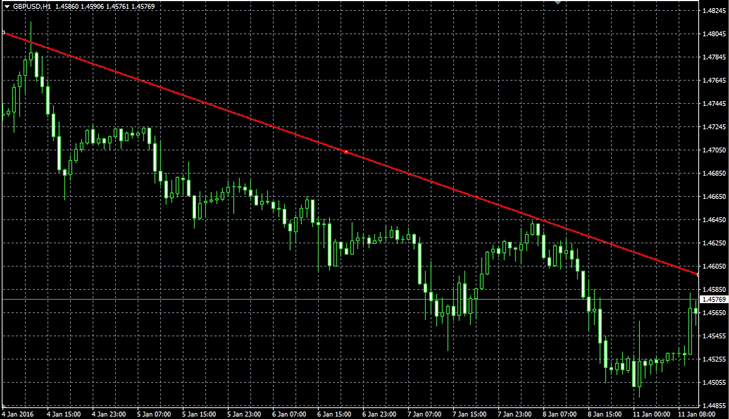 The strategy is based on a simple pattern, namely, if a pullback has formed in a downward trend, then most traders will trade to restore this trend. The same situation applies to an uptrend.
The strategy is based on a simple pattern, namely, if a pullback has formed in a downward trend, then most traders will trade to restore this trend. The same situation applies to an uptrend.
It is worth noting that this pattern is very easy to see, and a new movement leads to the breaking of important levels and the resumption of new highs and lows. For example, I recommend looking at the image of market behavior:
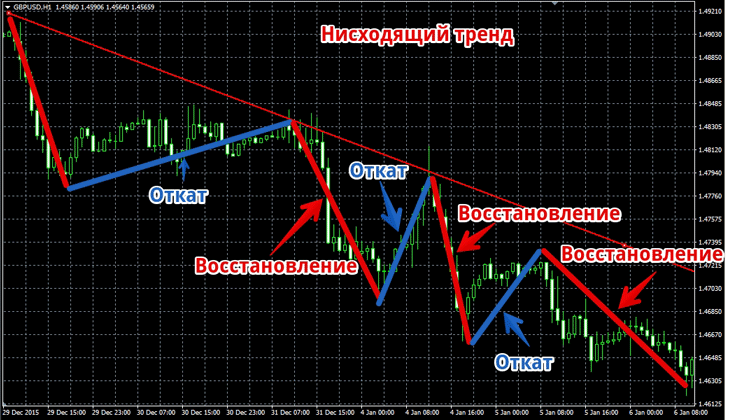
Rules for entering a position
The picture above clearly shows the typical price behavior after a pullback. According to the rules of the strategy, we are primarily interested in the recovery area. If in history everything looks quite colorful and clear, then in practice everything is much more complicated.
The only difficulty when trading is finding a timely entry point. To find it, you need to start your trading from support or resistance , important Fibonacci levels.
Sale entry rules:
1) There is a clearly formed downward trend in the market.
2) During the rollback, the price touched an important resistance level. If a trend line is used to define a trend, then it must be considered as a resistance level and enter a position in the direction of the trend.
Also, the price touching one of the Fibonacci levels can serve as a point for entering the market.
Example of a sell signal:
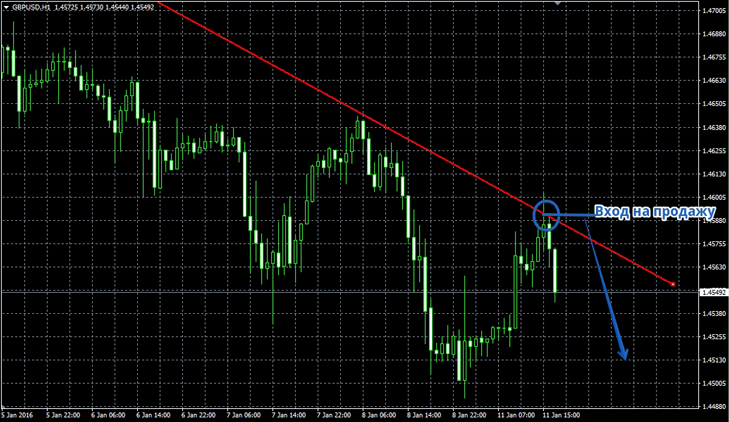
Rules for entering a purchase:
1) There is a clearly formed upward trend in the market.
2) During the pullback, the price touched an important support level. If a trend line is used to define a trend, then it must be considered as a resistance level and enter a position in the direction of the trend.
Also, the price touching one of the Fibonacci levels can serve as a point for entering the market.
Example of a buy signal:
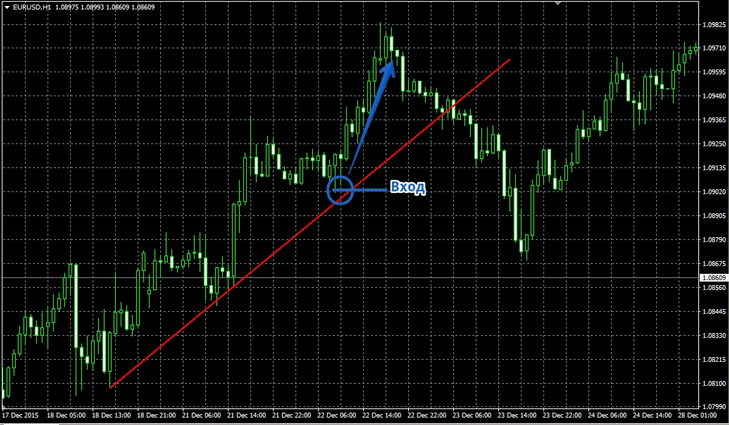
Using Oscillators
To simplify the search for an entry point for this strategy, you can successfully use a number of oscillators such as CCI, RSI, MACD. For example, if you use the RSI indicator, then to enter a sell position the price must be near the resistance level, and the RSI indicator must leave the overbought zone.
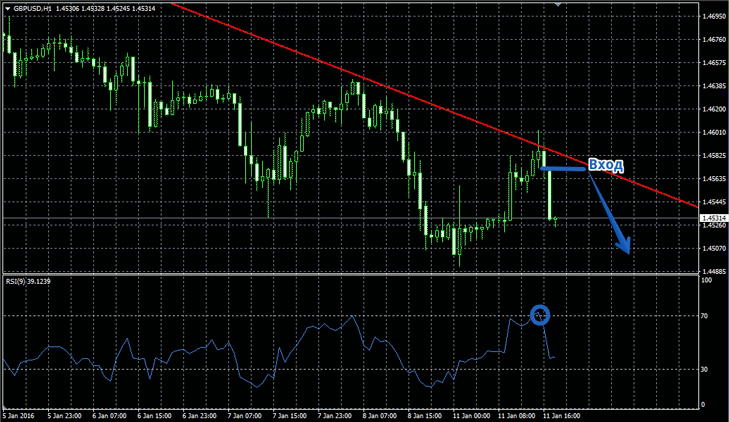
Stop order and profit when scalping on pullbacks.
Any scalping strategy is characterized by a very small stop order relative to the potential profit on the transaction. When trading on retracements, the stop must be set a couple of points above the support or resistance line, and in our case, 5-10 points from the trend line.
Due to the fact that the recovery phase is characterized by strong price movements, the size of the profit should be no less than the width of the rollback. For an example, look below:
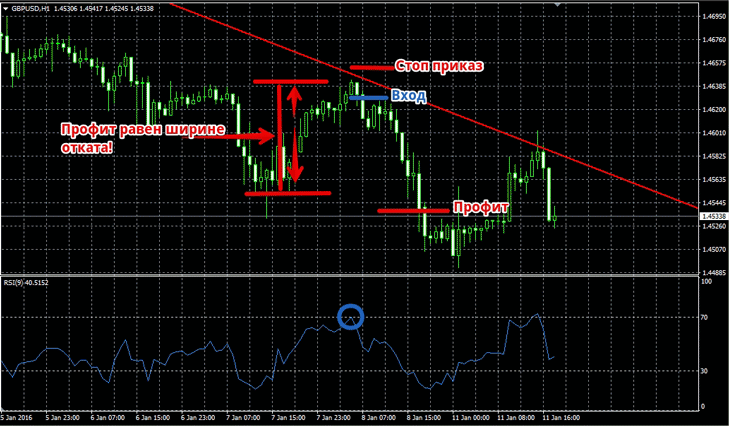 In general, the strategy is based on basic market patterns, so it can be applied to any currency pair or time frame. The difference in application on different time frames is that on five-minute periods the size of the stop order will be much smaller than on m30 or n1 as shown in the example.
In general, the strategy is based on basic market patterns, so it can be applied to any currency pair or time frame. The difference in application on different time frames is that on five-minute periods the size of the stop order will be much smaller than on m30 or n1 as shown in the example.
